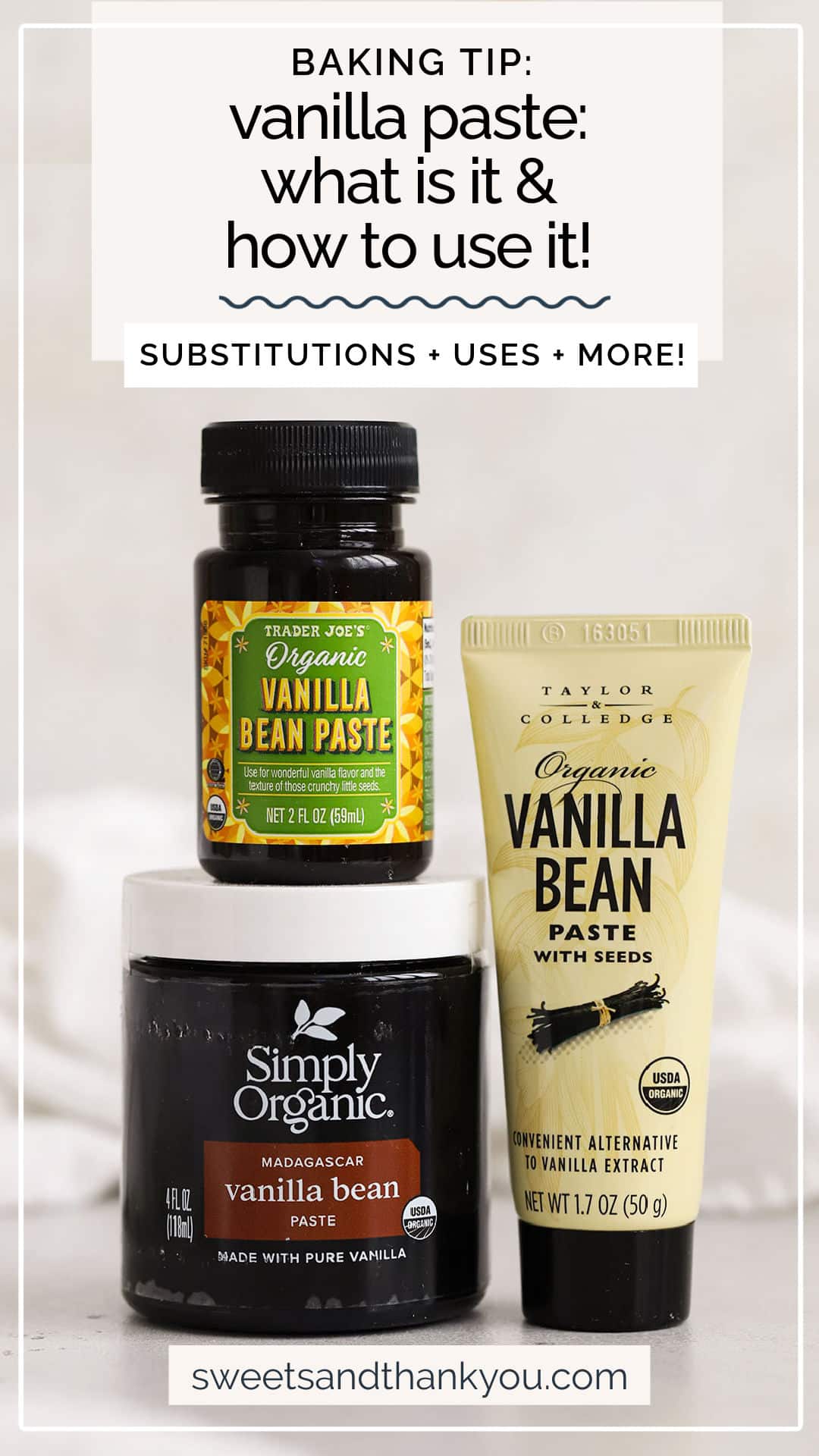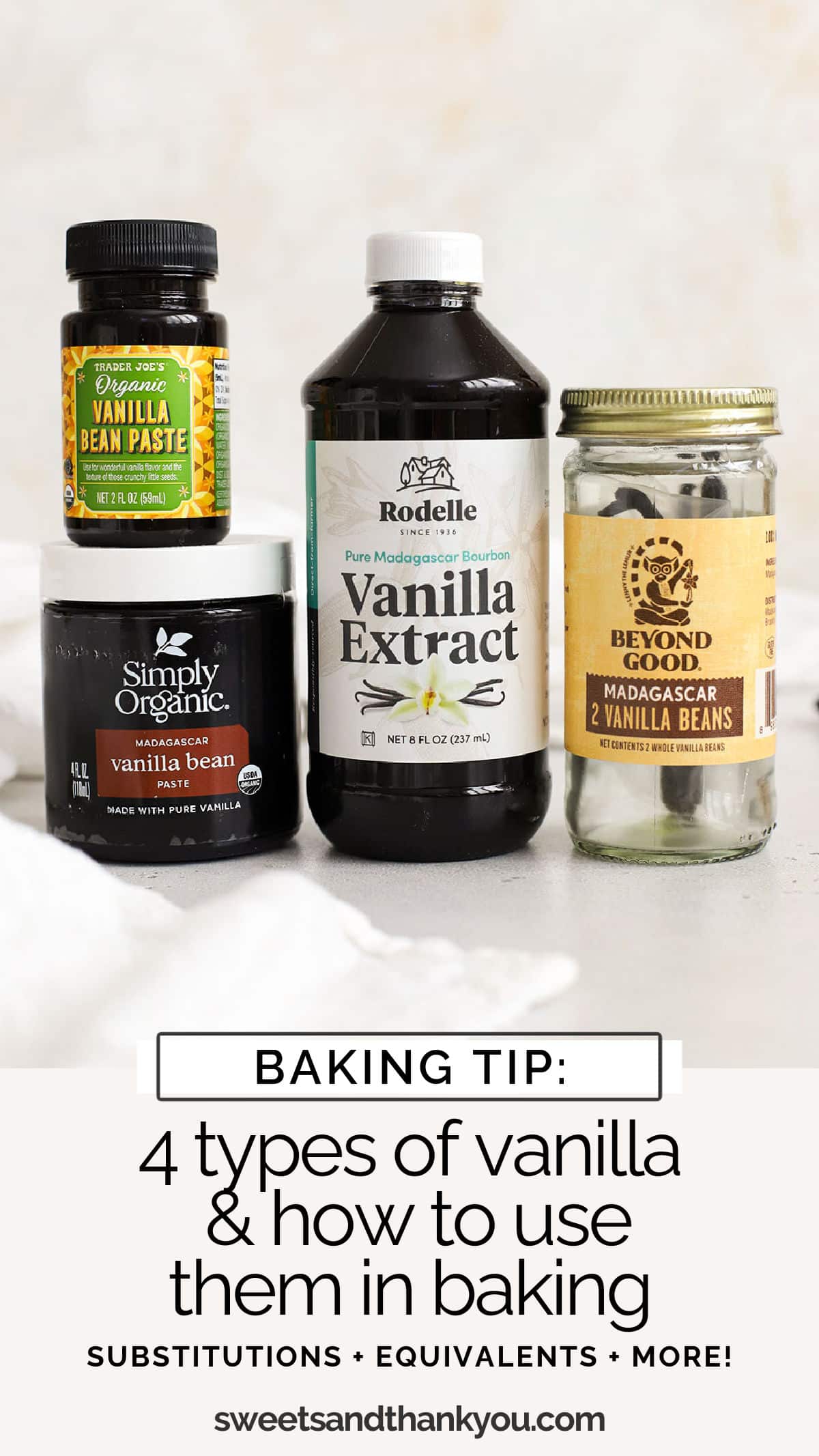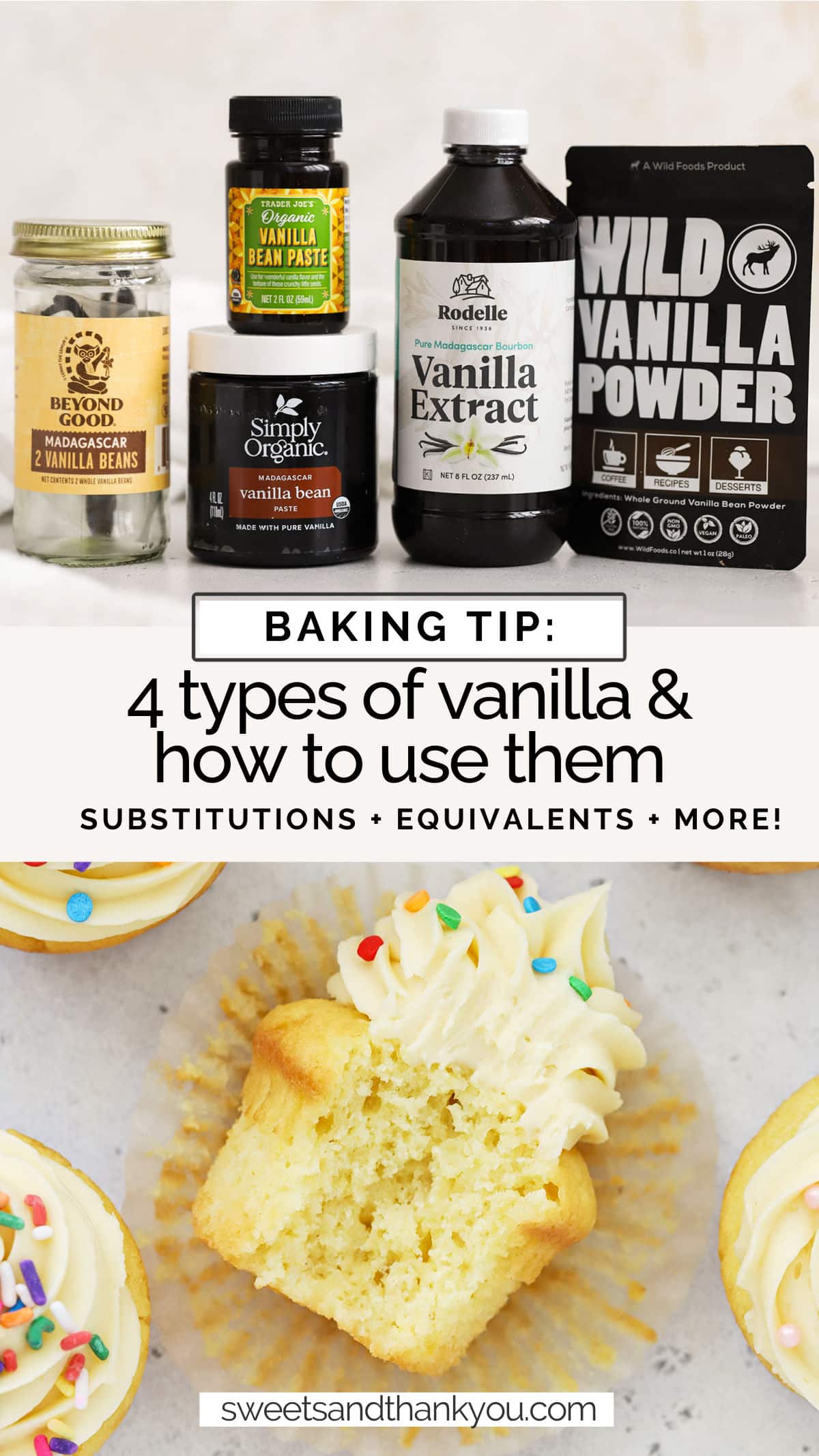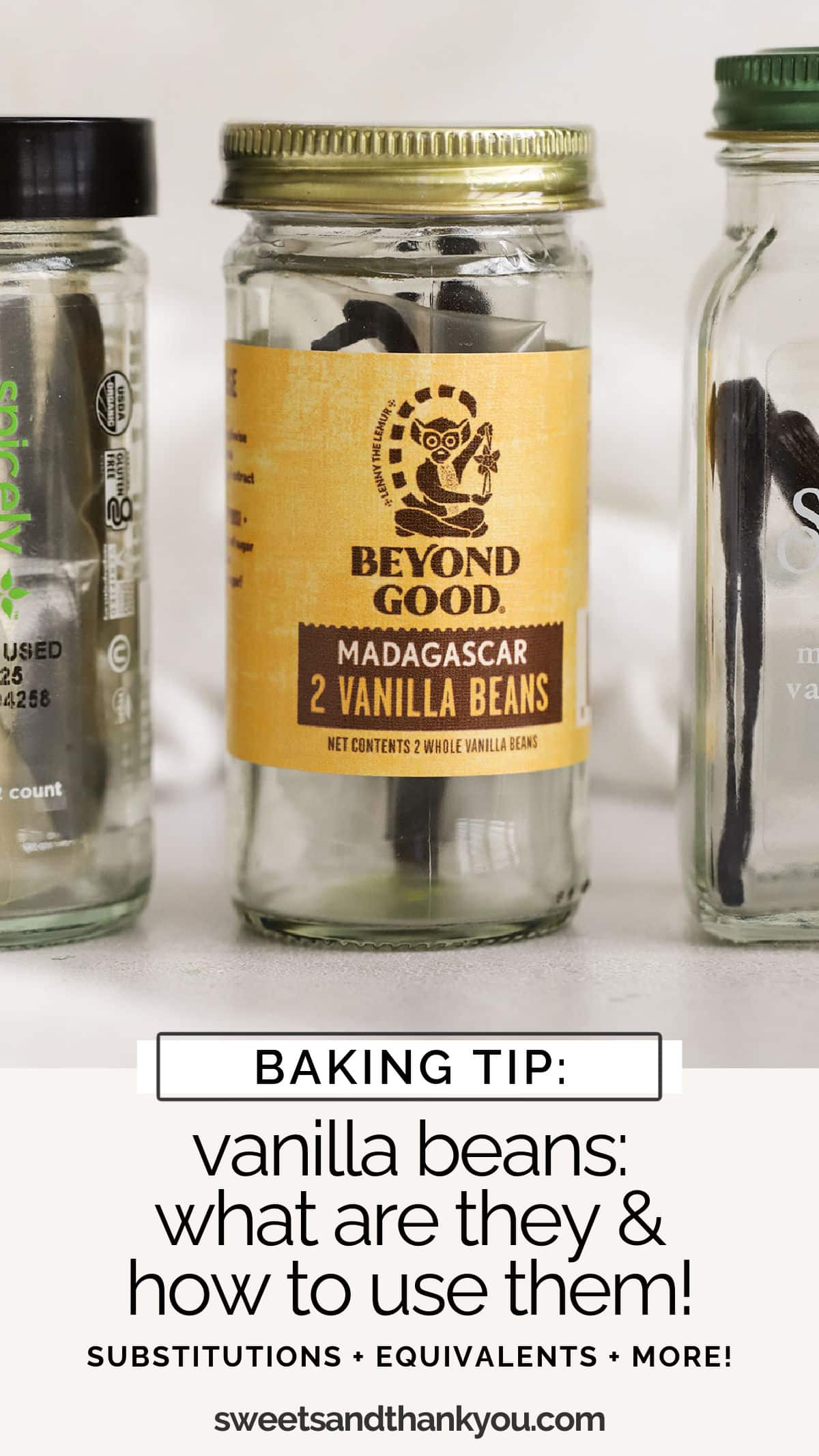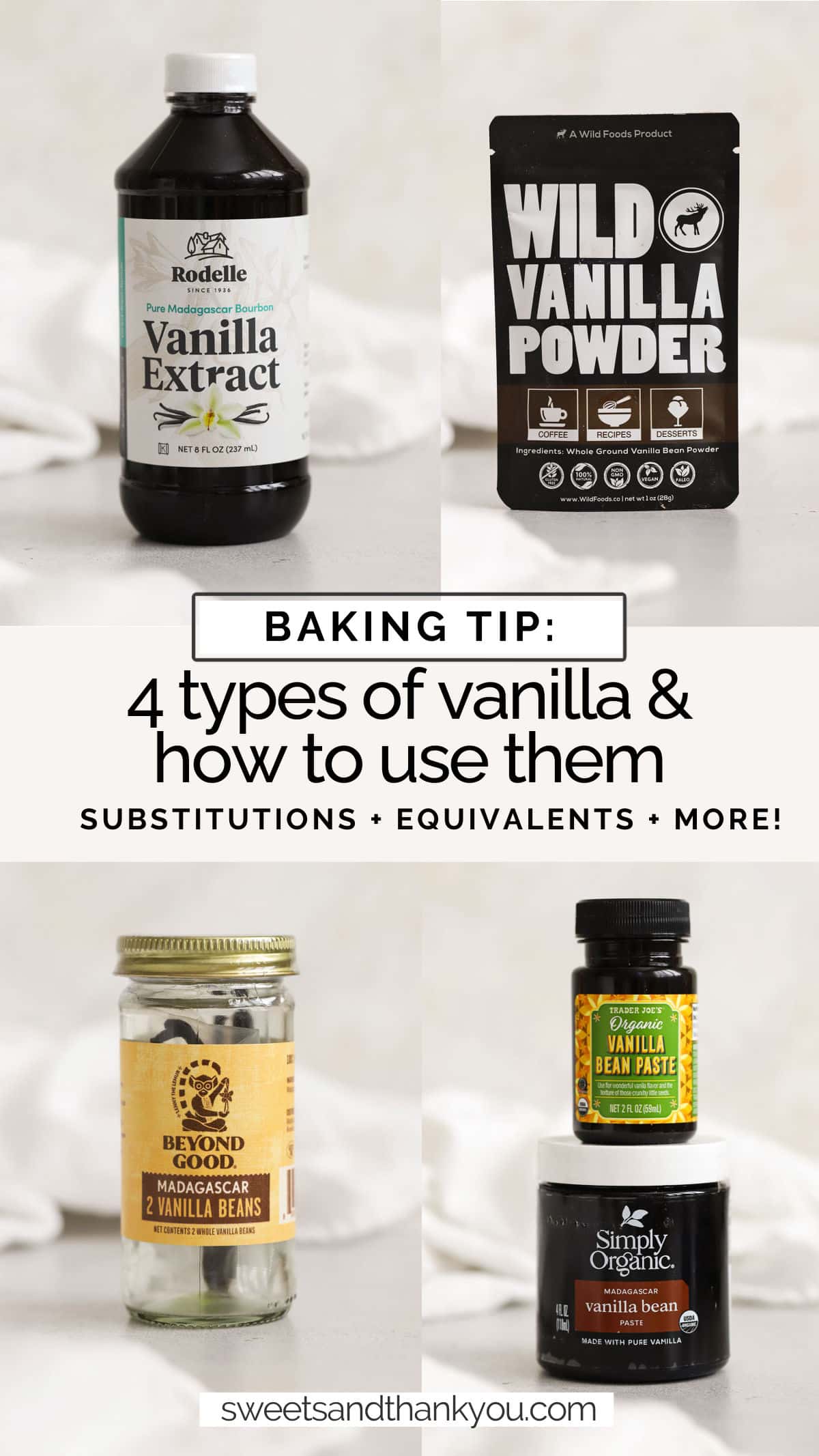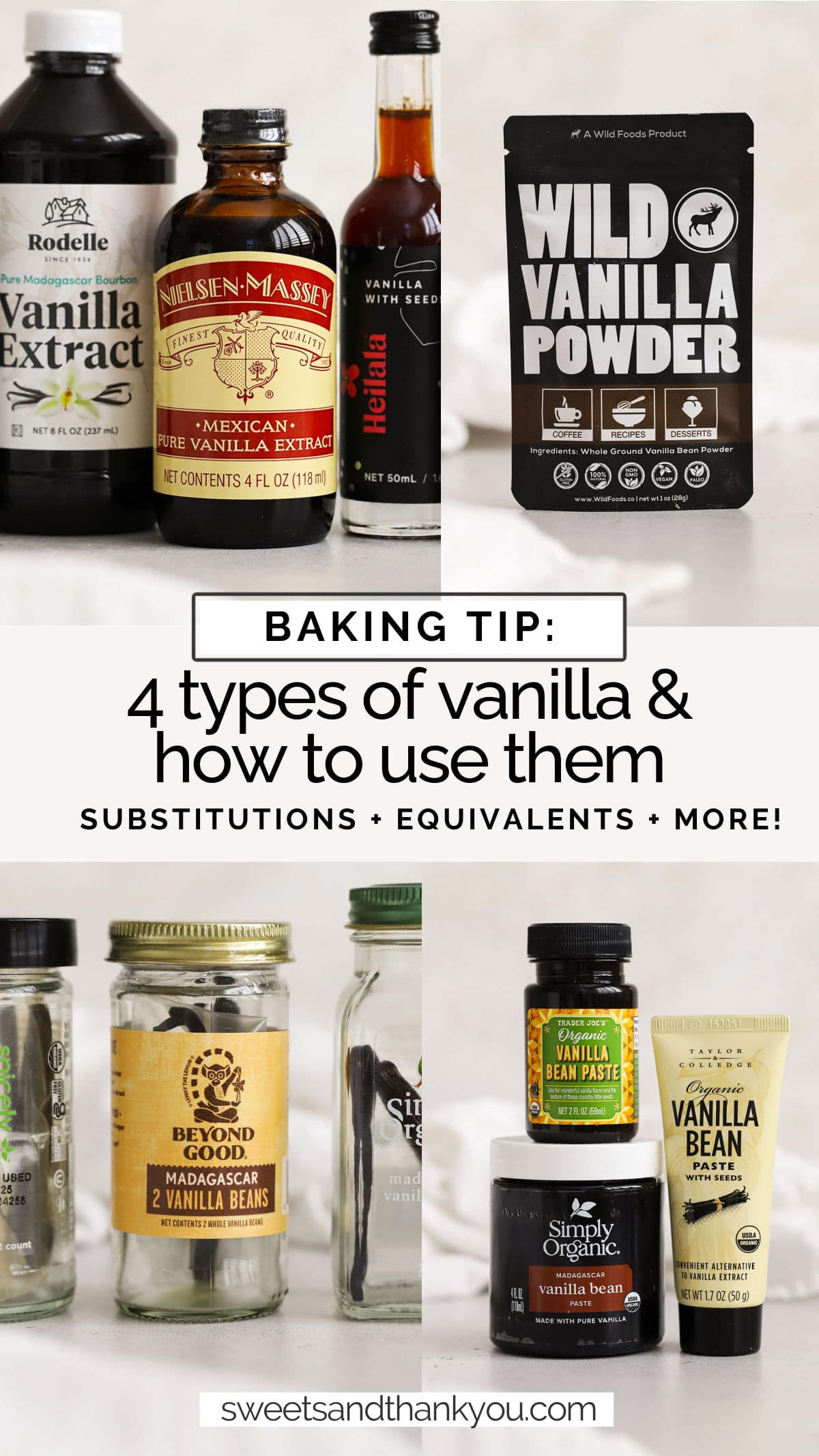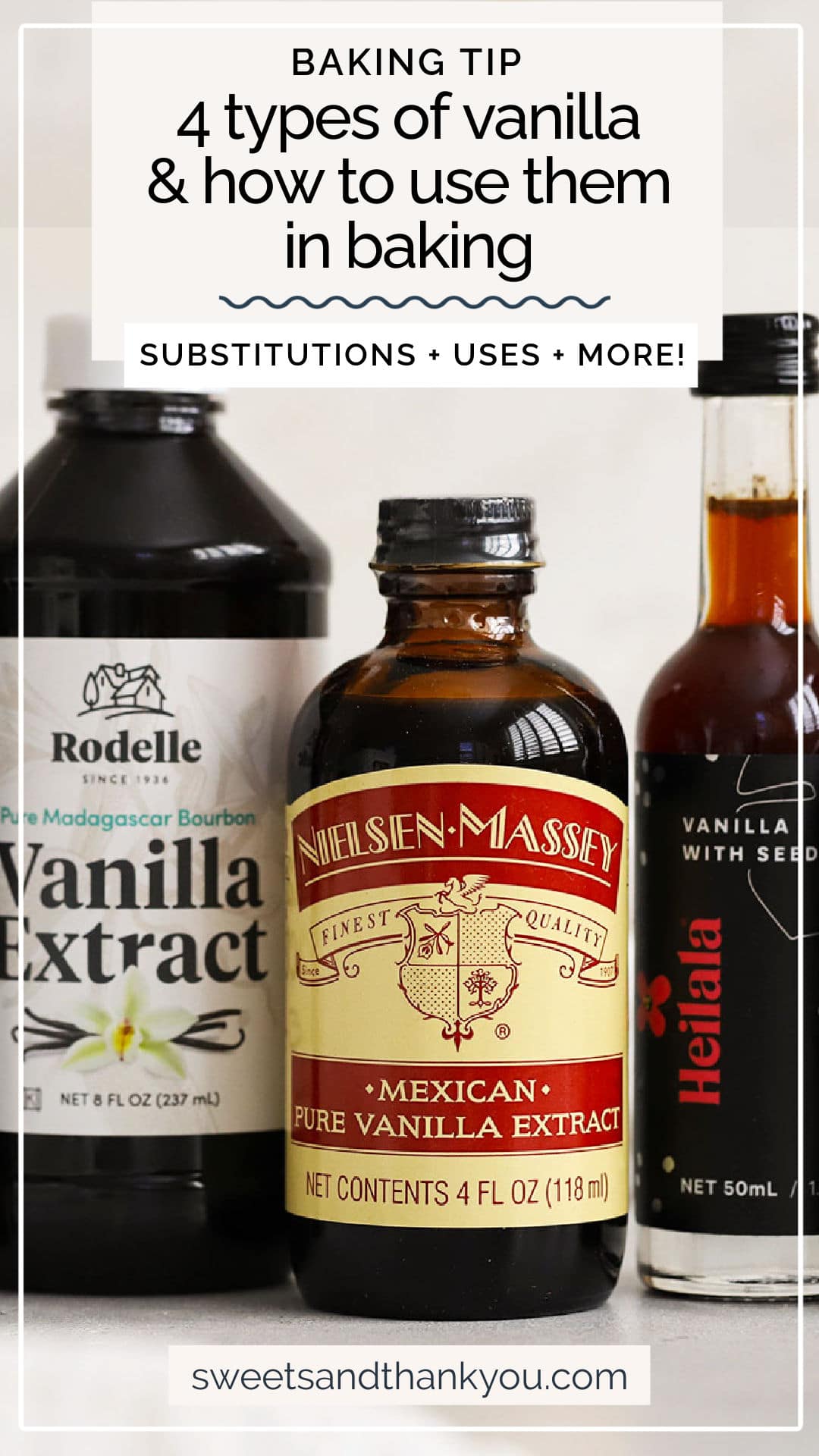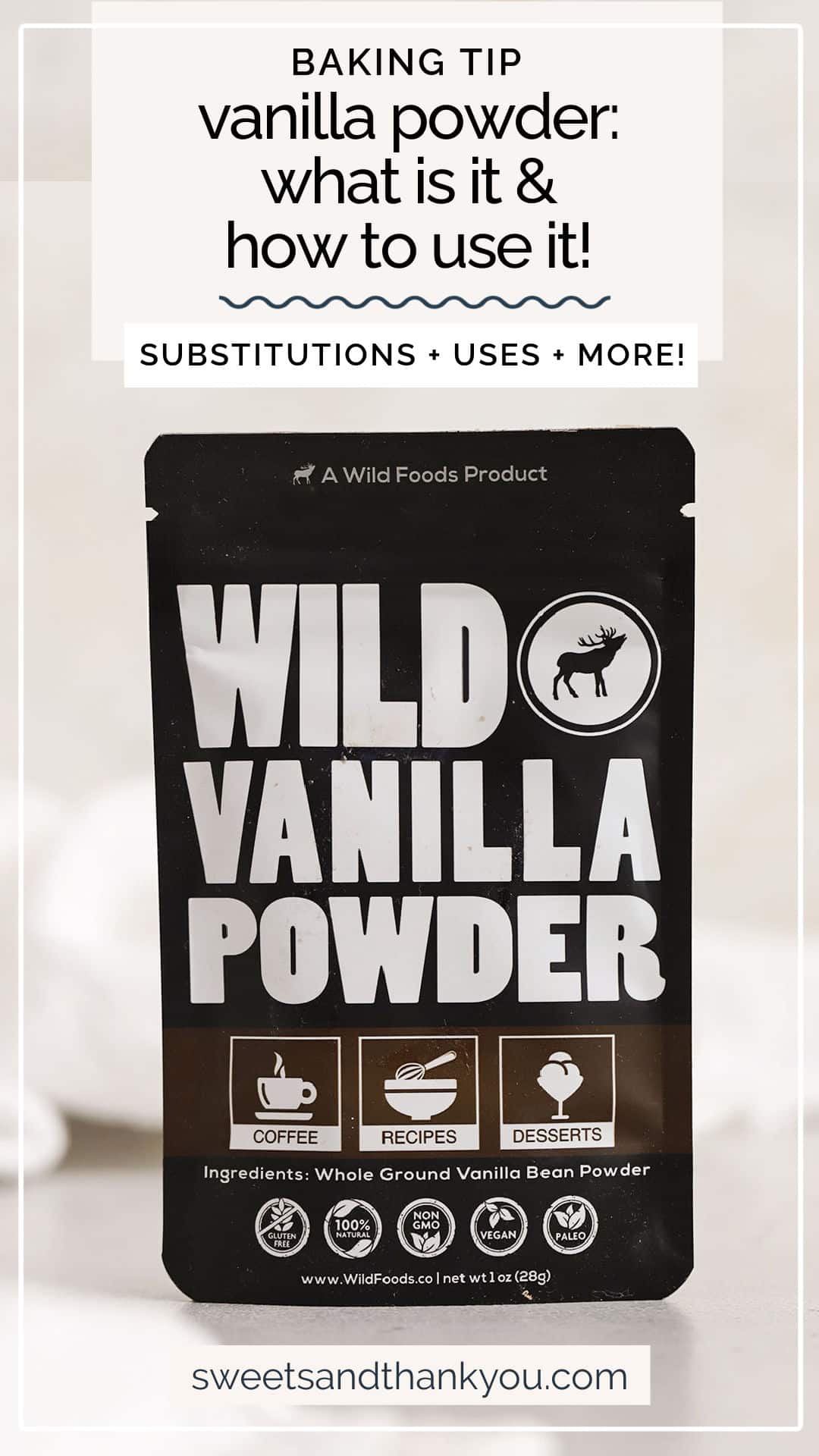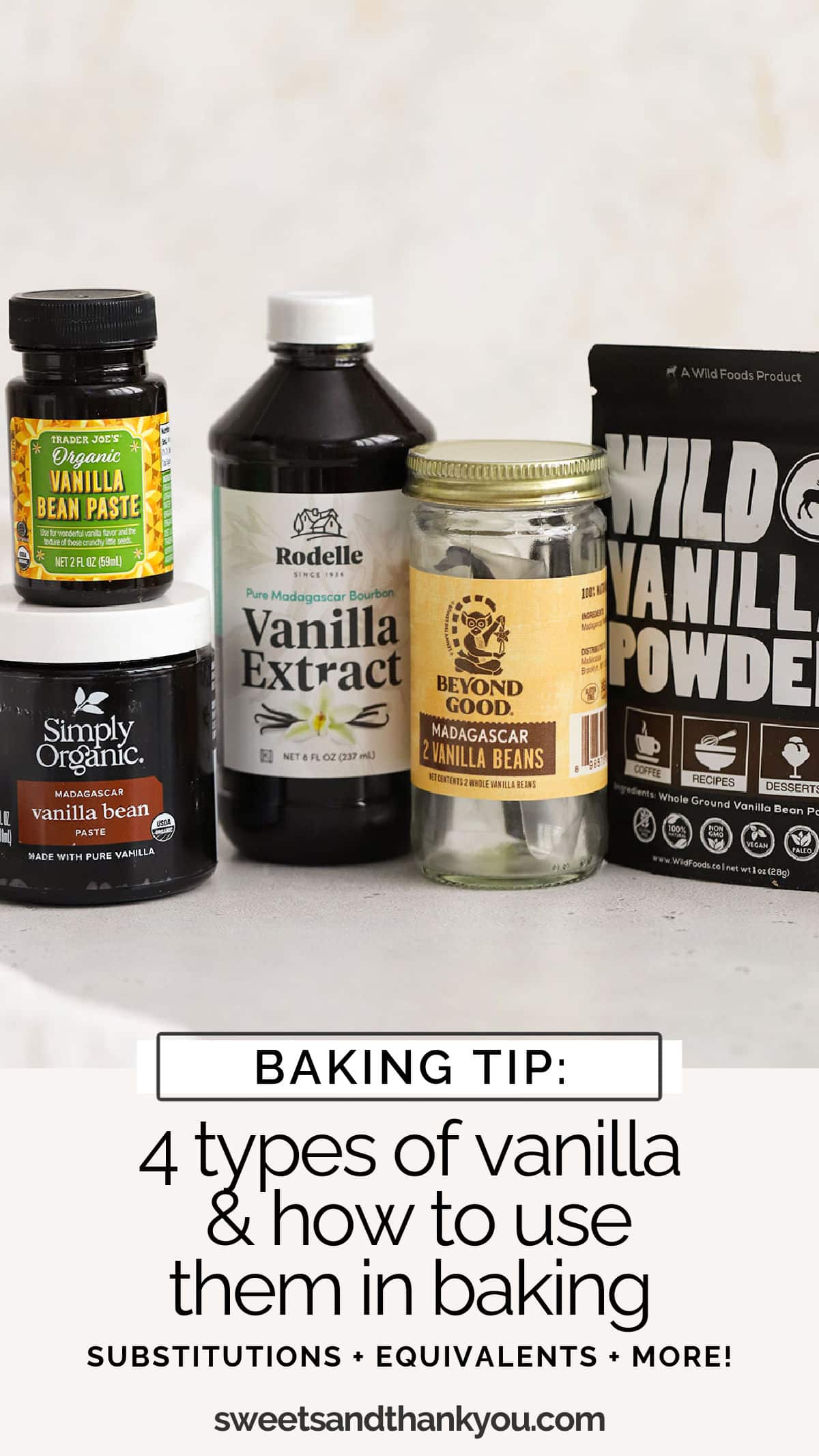Types Of Vanilla & How To Use Them
This post may contain affiliate links. See our disclosure policy for more.
What are the different kinds of vanilla? We’re breaking it all down! From vanilla extract, vanilla bean paste, vanilla beans, and more!
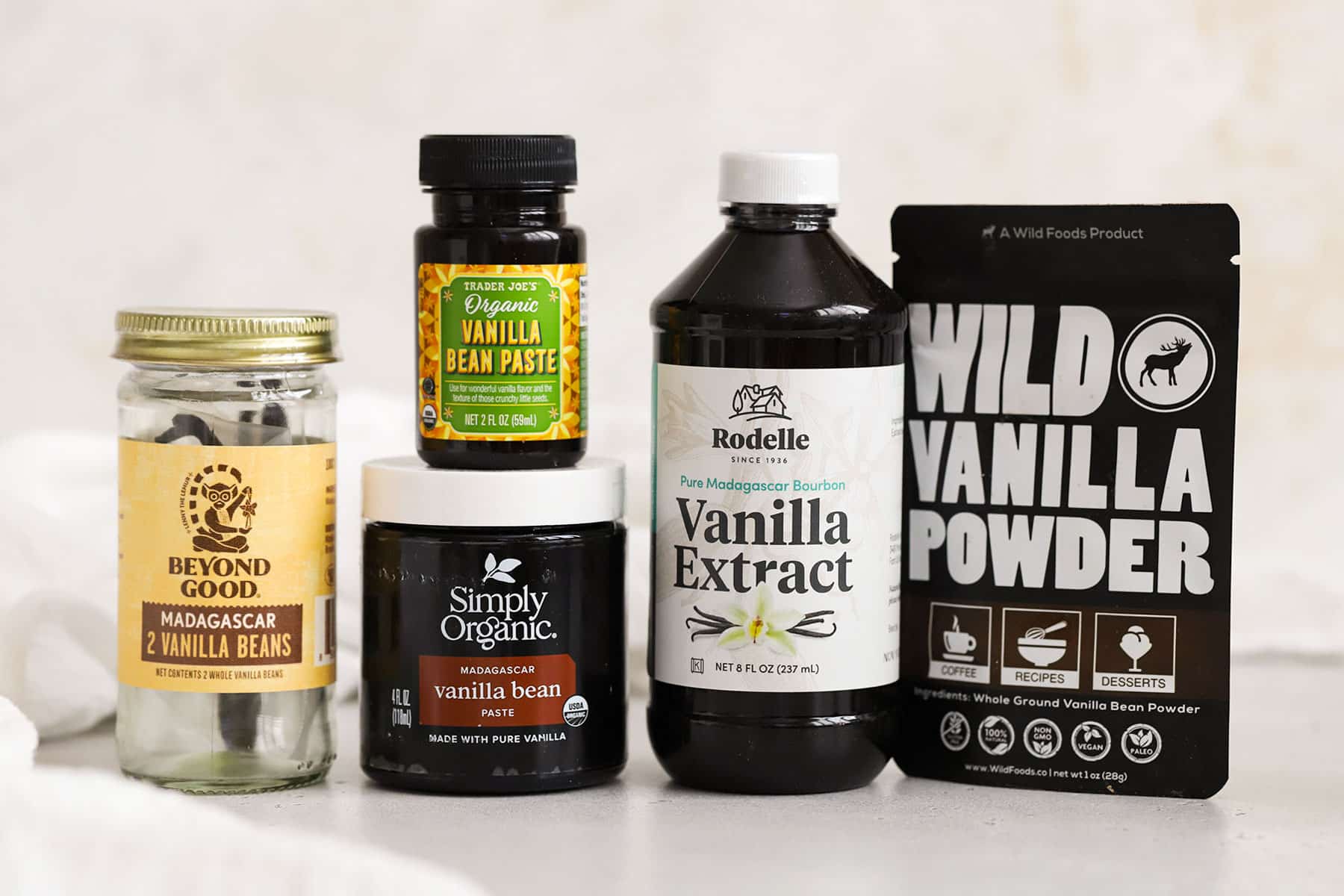
Vanilla adds gorgeous flavor to all kinds of recipes, from frosting, cake, and cookies, to ice cream, sauces, puddings, drinks, dessert, caramel sauce, and more. While the most common type of vanilla called for in baking is vanilla extract, vanilla comes in several different forms–vanilla beans, vanilla powder, vanilla bean paste, and vanilla extract.
For today’s Be A Better Baker baking tip, we’re breaking down 4 kinds of vanilla, when to use them, how to substitute them, and more.
Here’s what you need to know about the different types of vanilla in baking…
What ARe The Different Kinds OF VAnilla?
Vanilla is sold in several different forms for cooking and baking. Today, we’ll cover the 4 most common types of vanilla. Tap on the one you want to learn about!
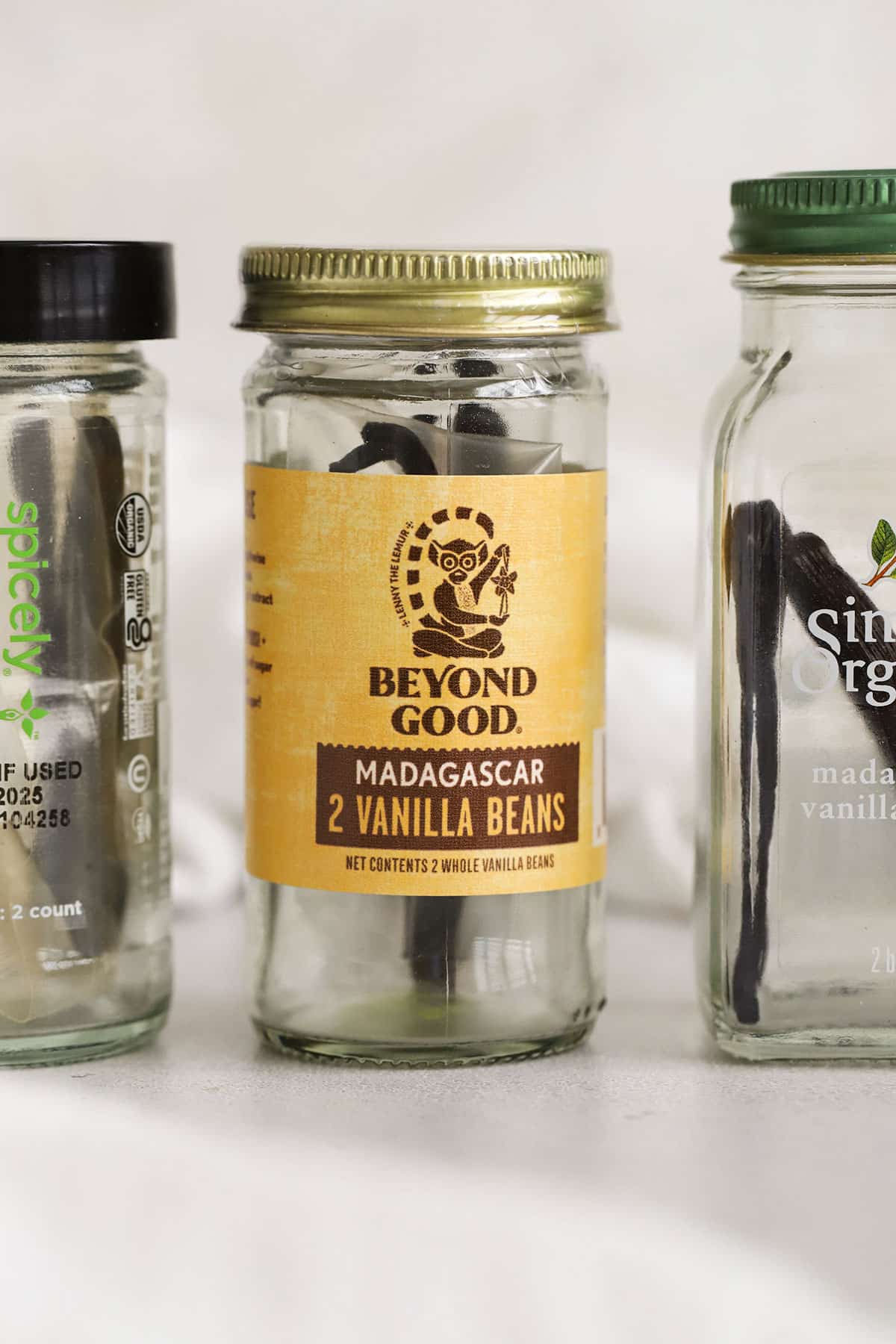
Vanilla Beans
Vanilla beans are long, black, slightly waxy whole vanilla pods with small black specks (vanilla seeds!) inside. They’re the priciest form of vanilla, with just 1-2 vanilla beans costing anywhere from $9-25. Vanilla beans offer an intense real vanilla flavor, with tiny black specks added to a recipe (this looks especially beautiful in pastry cream, frosting, and ice cream!).
Where do vanilla beans come from? It’s actually a seed pod from a vanilla orchid plant. Vanilla orchids originated in Mexico, but spread through trade and colonization. These days, vanilla orchids only grow in certain parts of the world–Mexico, Madagascar, Tahiti, the Caribbean, Hawaii, and Indonesia among them. You’ll usually see the source on the label (i.e. “Mexican vanilla beans,” “Tahitian vanilla beans,” “Madagascar vanilla beans,” etc.)
A discerning palate may be able to tell apart the unique flavor profile of each location, but the average home cook probably won’t.
When choosing vanilla beans, look for plump, smooth pods as these are less likely to be dried out. They should smell fragrant and almost have a shine to them. There are two grades of vanilla beans based on the moisture content. Grade A vanilla beans have about 30% moisture, while grade B have about 30% moisture. Grade A will have the most fresh, vibrant flavor, while B works great for infusing vanilla extract, vanilla sugar, etc.
How To Use Vanilla Beans
To open and use a vanilla bean, you typically use a sharp knife to make a slit lengthwise to split the pod open. Then use the sharp tip of your blade or the back of your knife to scrape all the little black vanilla seeds out of the pod. Once you’ve extracted all the seeds, you can still use the pod to add vanilla to other recipes! Use it to infuse pastry cream or pudding, make vanilla extract, make vanilla powder, or make vanilla sugar.
How much vanilla extract do you use for 1 vanilla bean?
While the flavor won’t be exactly the same, you can use 1 Tablespoon of vanilla extract for 1 vanilla bean.
What’s the best substitute for vanilla beans?
I recommend vanilla bean paste, as you’ll still get those gorgeous flecks. Different vanilla pastes have different potencies, but you’ll often use 1 teaspoon – 1 Tablespoon of vanilla paste per vanilla bean in a recipe. Check your specific brand for equivalencies!
- Heilala Vanilla Paste = 1 teaspoon vanilla paste per vanilla bean
- Nielsen Massey Vanilla Paste = 1 Tablespoon vanilla paste per vanilla bean
- Rodelle Vanilla Paste = 1 teaspoon vanilla paste per vanilla bean
- Simply Organic Vanilla Paste = 1 Tablespoon vanilla paste per vanilla bean
- Trader Joes Vanilla Paste = 1 Tablespoon vanilla paste per vanilla bean
If your recipe is more delicate and can’t take extra liquid, I recommend vanilla powder, as it adds the same vanilla flecks, but won’t add additional liquid to your recipe.
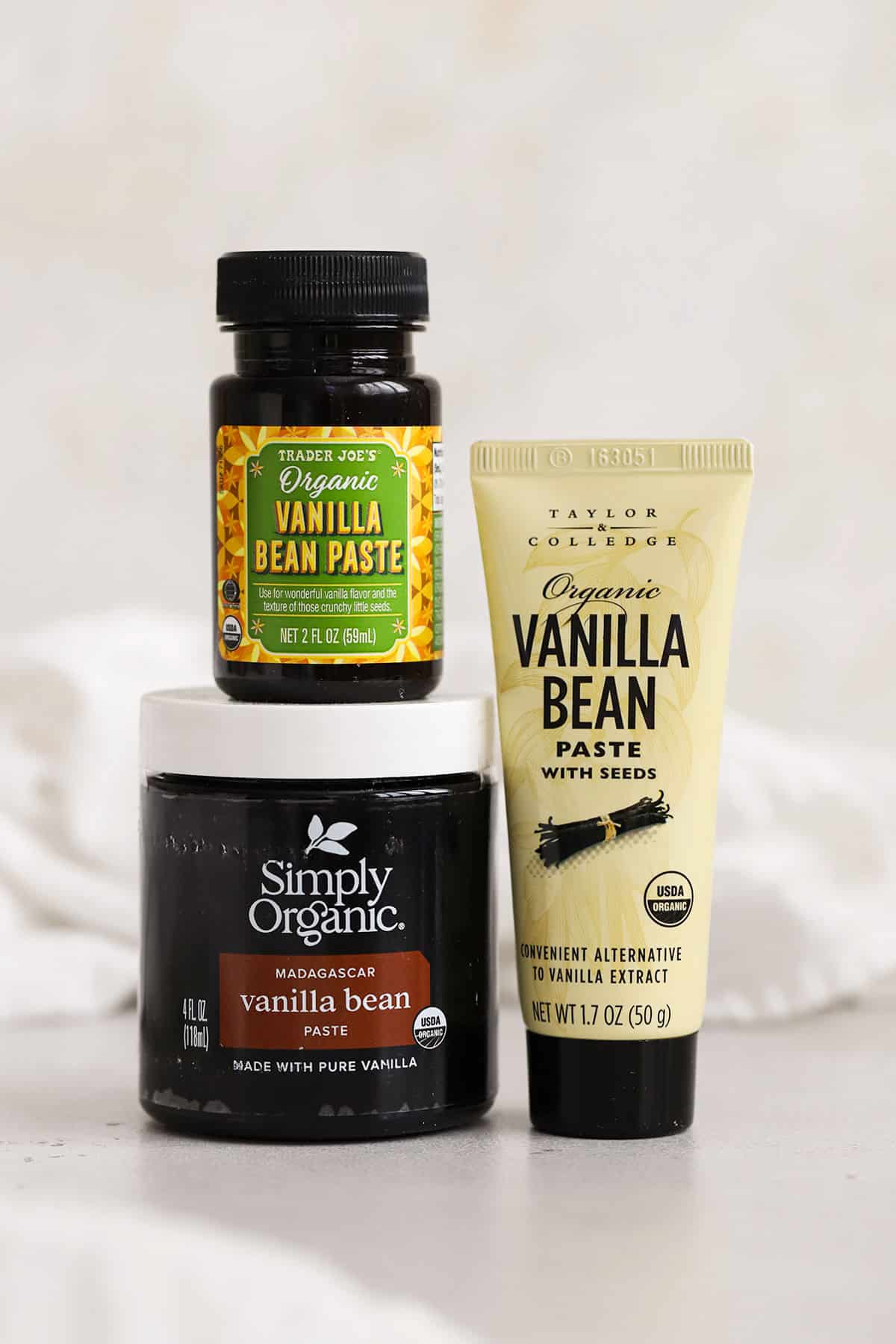
Vanilla Bean Paste
Sometimes labeled “vanilla paste,” vanilla bean paste is a solution made with real vanilla bean flecks for true vanilla flavor. In many ways, it’s the perfect middle ground between vanilla beans and vanilla extract. Vanilla paste has more vibrant vanilla flavor than vanilla extract and still adds the gorgeous flecks to recipes like vanilla beans do.
My favorite way to use vanilla bean paste is when the vanilla flecks will be visible in your recipe. That’s why vanilla paste is so great in recipes like frosting, whipped cream, custard, pudding, and ice cream.
Common ingredients for vanilla bean paste are vanilla bean, sugar syrup, invert syrup, or glucose, sometimes alcohol, and thickeners like xanthan gum, acacia gum.
How Much Vanilla Paste Do You Use Per Teaspoon Vanilla Extract?
Vanilla paste can typically be used 1:1 for vanilla extract. So, if your recipe calls for 1 teaspoon of vanilla extract, you can use 1 teaspoon of vanilla bean paste.
What Is The Best Substitute For Vanilla Bean Paste?
The best vanilla bean paste substitute is vanilla extract! While you won’t get the same vanilla bean flecks, you can use the same amount of vanilla extract in place of vanilla bean paste.
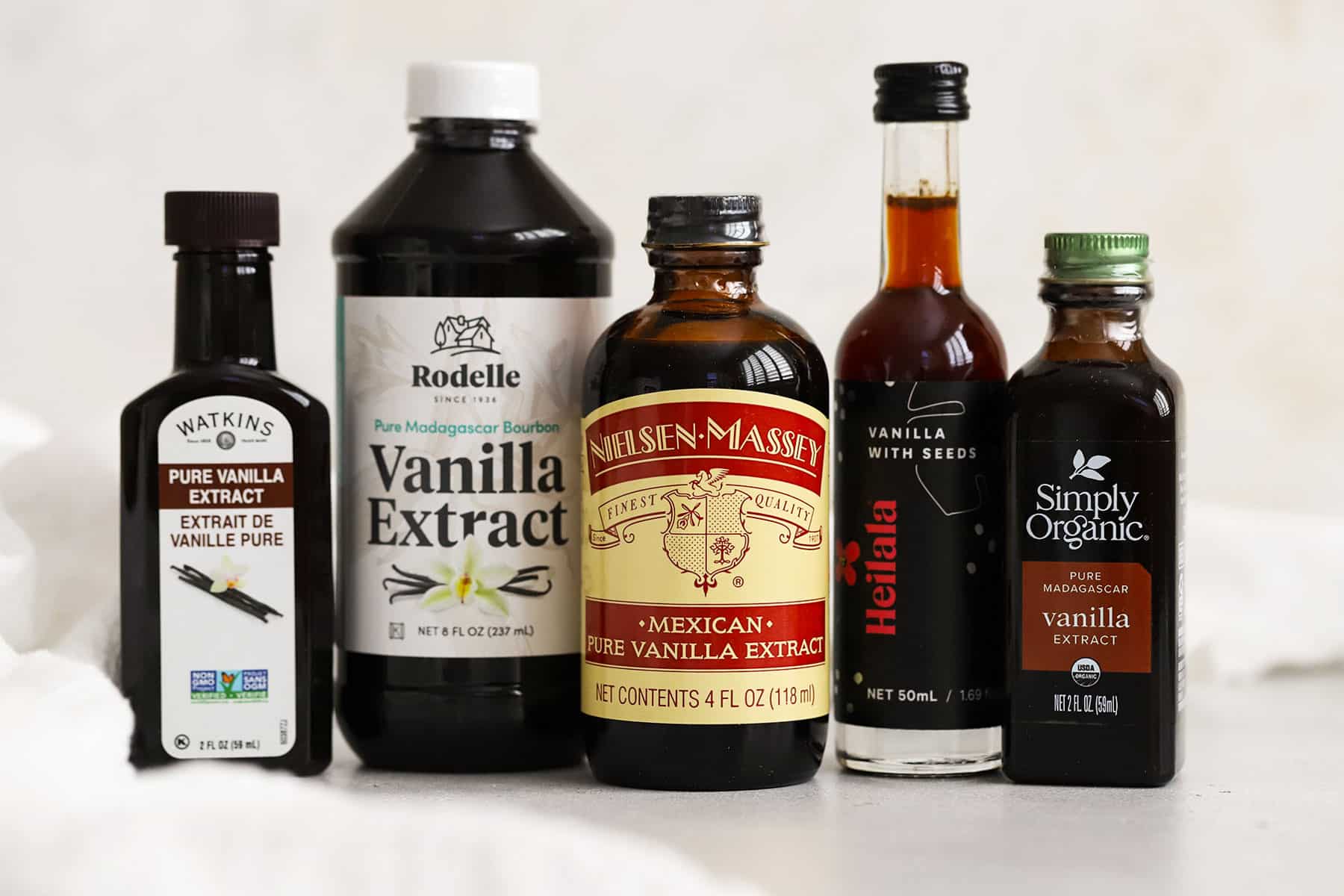
Vanilla Extract
What Is Vanilla Extract Made Out Of?
Vanilla extract is typically made from alcohol infused with vanilla. Many vanilla extracts use bourbon, vodka, or occasionally brandy. (That’s why you might see a bottle labeled “bourbon vanilla,” for instance.) If you avoid alcohol in vanilla, there are alcohol-free vanilla extract available on the market. It usually uses sugar syrup, corn syrup, or glucose syrup instead of alcohol.
What’s The Difference Between Pure Vanilla Extract And Vanilla Flavoring?
Imitation vanilla extract or vanilla flavoring uses artificial flavorings (typically vanillin) instead of real vanilla beans. You can use them interchangeably in recipes, though they’ll have different flavors.
Can You Make Vanilla Extract From Scratch?
Yes! It’s easy and makes a great gift! Sally has a vanilla extract recipe here.
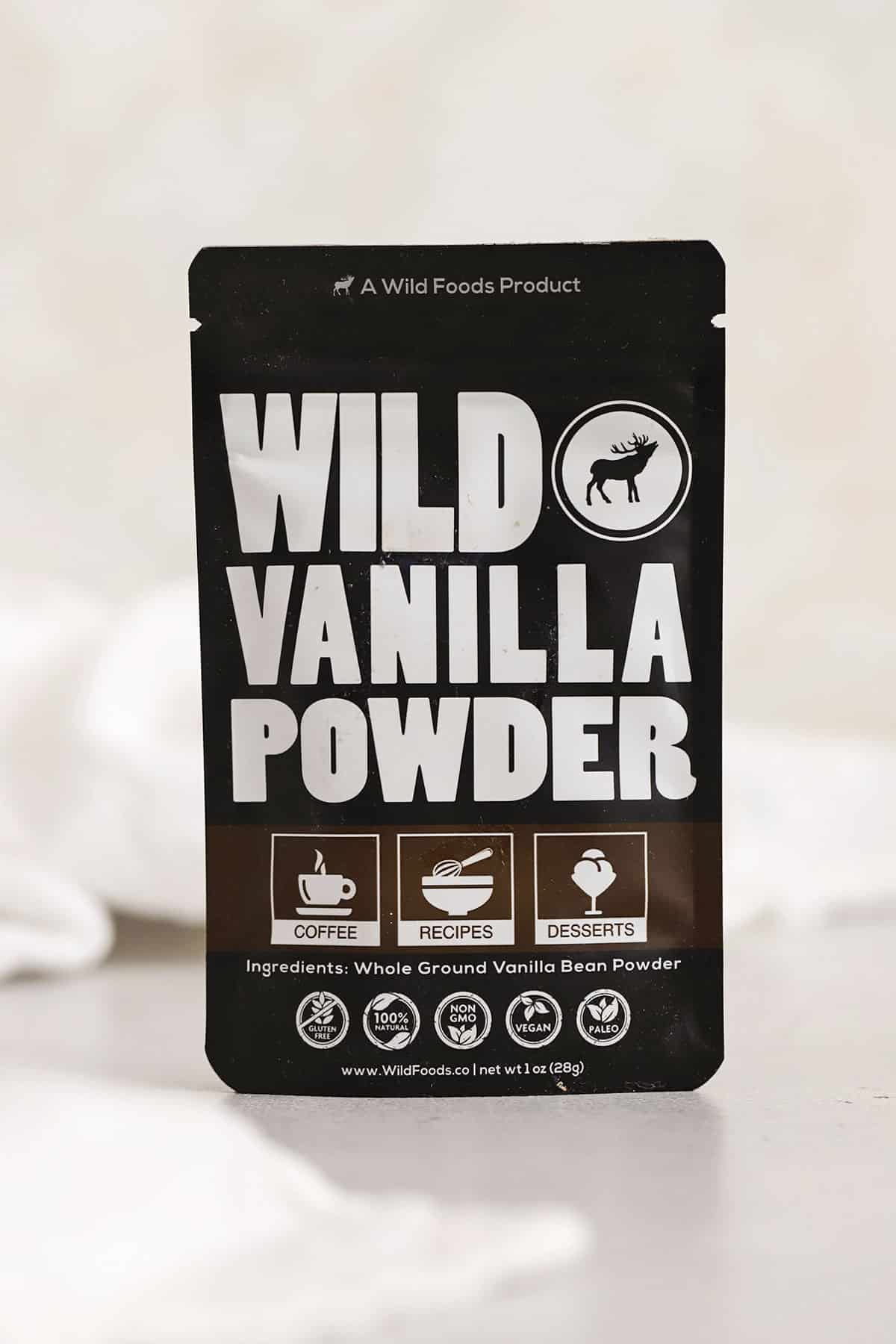
Vanilla Powder
What Is Vanilla Powder Made From?
Tue vanilla powder is made from ground vanilla beans and has a dark appearance (that matches the dark color of vanilla beans). It has an intense, fragrant vanilla taste and aroma and won’t add extra liquid to recipes.
Is Vanilla Powder The Same As Vanilla Sugar?
Nope! Vanilla powder is just ground vanilla beans, where vanilla sugar is sugar infused with vanilla bean.
Vanilla Powder Equivalencies:
The exact amount will vary brand to brand, but a general rule of thumb is:
- 1/2 teaspoon vanilla powder = 1 teaspoon vanilla extract
- 1/2 Tablespoon vanilla powder = 1 Tablespoon vanilla bean paste
- 1/2 teaspoon vanilla powder = 1 vanilla bean
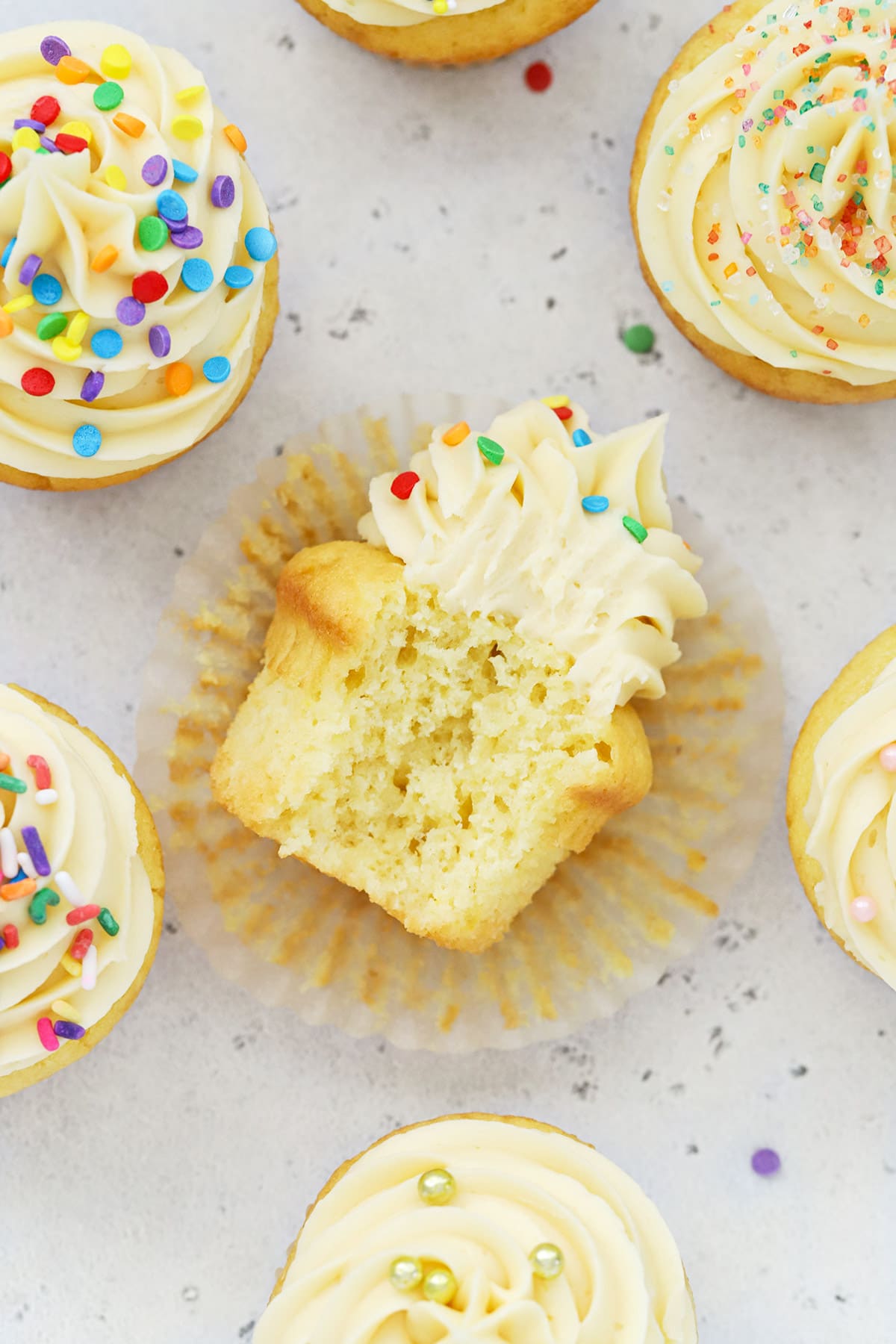
The Bottom Line
Vanilla comes in 4 main forms–whole vanilla beans, vanilla bean paste, vanilla extract, and vanilla powder. It’s an essential ingredient in baking and different forms of vanilla work differently in recipes. When substituting one form of vanilla for another, consult your brand packaging and directions to substitute accurately, as different brands have different potencies and formulations.
FAQ + Tips And Tricks For Vanilla
Where’s The Best Place To Buy Vanilla Beans? You can often save money by buying vanilla beans in bulk. Costco, Heilala, and other brands often carry bulk packages at a discount.
Look For Sustainable Brands. Not all vanilla is grown, harvested, and sold ethically with respect to the land and farmers. To support ethical and sustainable agriculture, prioritize brands that use sustainable and fair trade practices.
How Long Does Vanilla Extract Last? When stored correctly (airtight, away from sunlight), vanilla can stay fresh for years (some say indefinitely!). Rodelle recommends using your vanilla within 5 years, but check your packaging for directions and expiration dates.
How To Use Spent Vanilla Beans. After scraping out the seeds, DON’T throw those vanilla bean pods away! You can use them to infuse vanilla sugar, make vanilla extract, infuse pastry cream, pudding, or ice cream, or make vanilla powder!
Why Is Vanilla So Expensive? It must be hand-picked, so it’s very labor intensive. Vanilla also only grows in certain parts of the world, so it’s more rare than many other edible plants.
WE ♥
TIPS & TRICKS
More tips to help you:
- Sprinkles 101: Types Of Sprinkles, Uses & More!
- How To Brown Butter
- 3 Ways To Separate Egg Yolks & Egg Whites
- How To Get Eggs To Room Temperature FAST
- How To Measure Flour Correctly (Scoop & Level Method)
- How To Check If Your Baking Soda & Baking Powder Are Fresh
- How To Freeze Cookie Dough (& Bake From Frozen)

